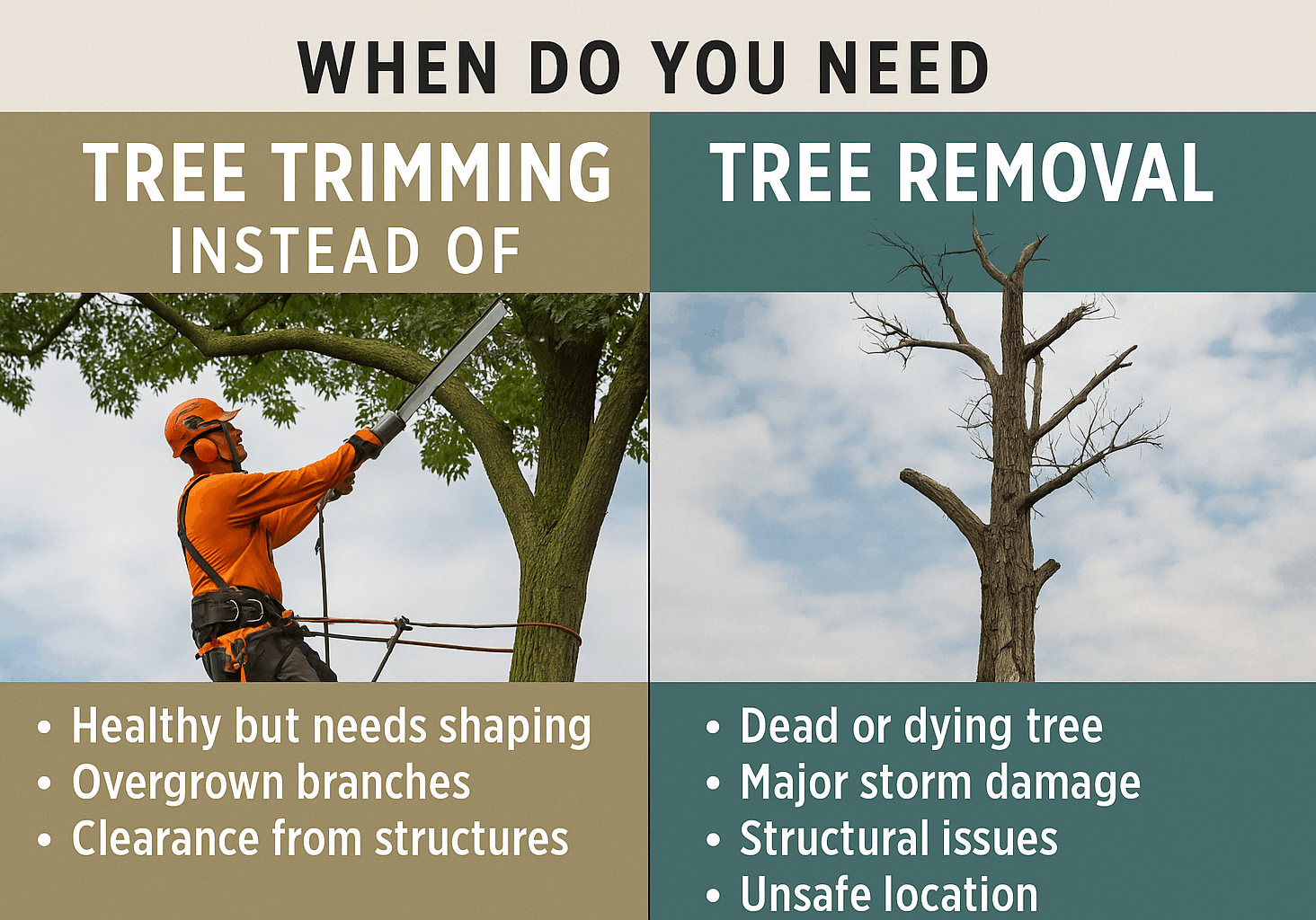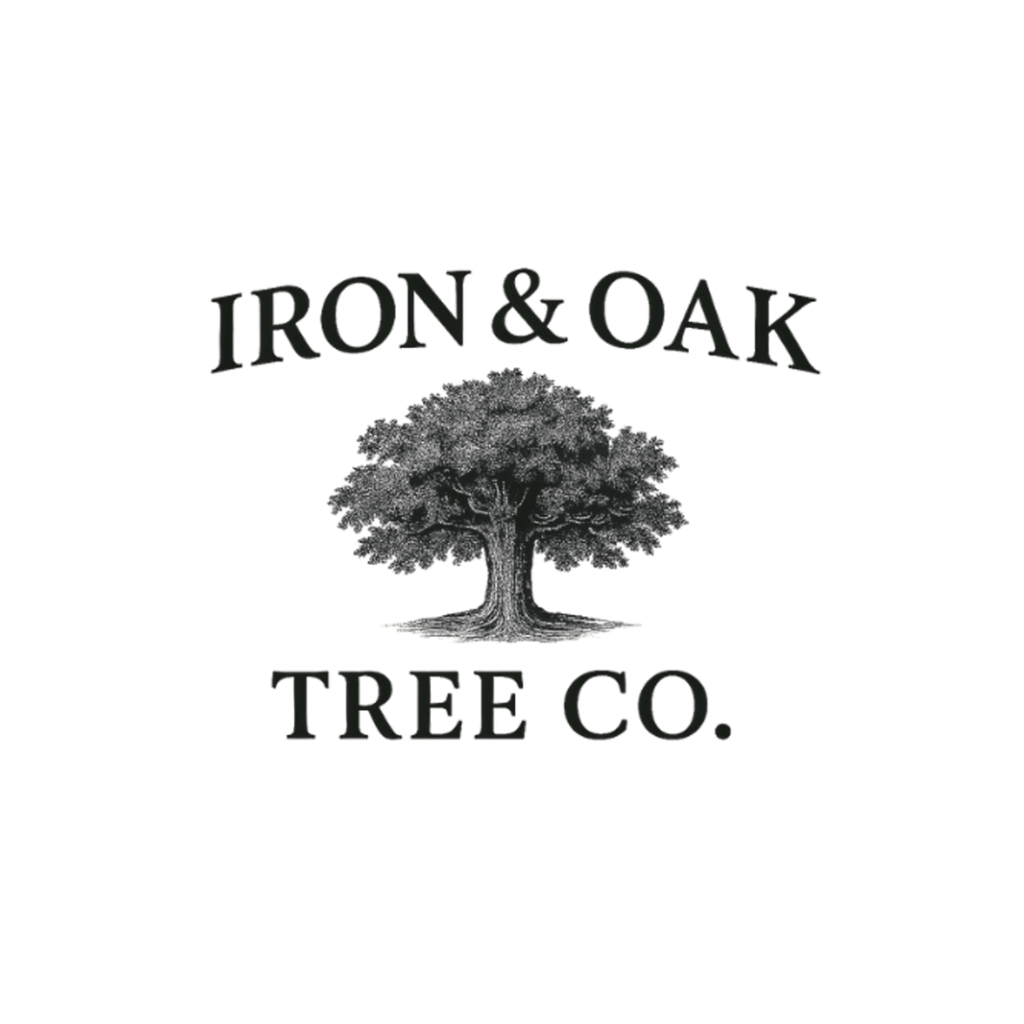When Do You Need Tree Removal Instead of Trimming?
In Minnesota, homeowners often wonder whether their tree simply needs trimming—or if full removal is the safer choice. While trimming can solve many issues, there are situations where keeping the tree puts your property and family at risk.
This guide will help you understand the difference between tree trimming and tree removal, the safety signs to watch for, and when to call an arborist for a professional recommendation.

Tree Trimming vs. Tree Removal in Minnesota
Tree Trimming is best when your tree is healthy but needs shaping, weight reduction, or clearance from your roof or power lines. Regular trimming keeps trees strong, improves appearance, and reduces the risk of falling branches.
Tree Removal becomes necessary when a tree is beyond saving—whether from disease, storm damage, or structural instability. Removing a tree is often the only way to eliminate dangerous hazards and protect your property.
Safety Signs That Point to Tree Removal
If you notice any of these warning signs, trimming may not be enough:
-
Large dead branches high in the canopy that continue to fall.
-
Cracks in the trunk or major limbs that compromise structure.
-
Severe lean that has worsened over time.
-
Root damage visible at the soil line (heaving, decay, or exposed roots).
-
Hollow or decayed trunk that sounds empty when tapped.
-
Fungal growth or mushrooms near the base of the tree.
These are strong indicators of a dangerous tree that may require removal.
Arborist Recommendations
A certified arborist can determine whether trimming will extend the tree’s life—or if removal is the safer route. At Iron & Oak, we evaluate:
-
The tree’s overall health and age
-
The extent of disease or decay
-
The location of the tree relative to your home, power lines, or other structures
-
Potential risks during storms or high winds
Sometimes, trimming is enough to restore balance and safety. But if more than half the tree is compromised, or if structural issues can’t be corrected, arborists typically recommend full removal.
Storm-Damaged Trees in Minnesota
Minnesota’s harsh weather creates unique challenges. Heavy snow, ice, and high winds can break branches or split trunks. While small damaged limbs can be trimmed, severe storm damage often makes trees unstable.
Examples where removal may be necessary:
-
A tree struck by lightning and split down the middle
-
A partially uprooted tree leaning toward a house
-
Large limbs dangling dangerously over a driveway or sidewalk
Prompt removal of storm-damaged trees prevents further property damage and ensures safety.
Choosing Safety First
Attempting to trim or remove a dangerous tree on your own is risky. Without the proper equipment and training, you could harm yourself, your property, or nearby structures. Professional tree removal services provide:
-
Safe and efficient removal
-
Storm cleanup and emergency response
-
Protection for your lawn and landscaping during the process
Final Thoughts
Not every tree needs to come down—but when the risks outweigh the benefits, removal is the best option. By recognizing safety signs and consulting with a trusted arborist, you can make informed decisions for your property.
At Iron & Oak, we help Minnesota homeowners determine whether trimming or removal is the right solution.
